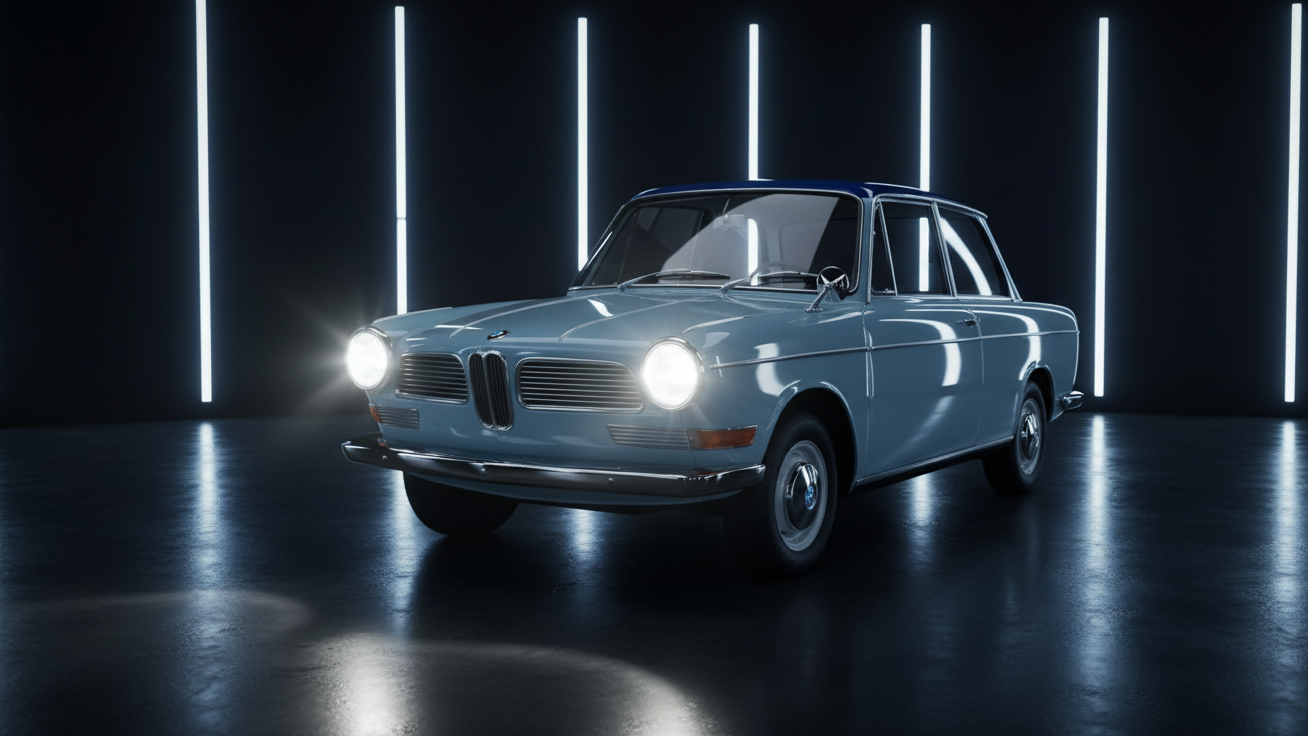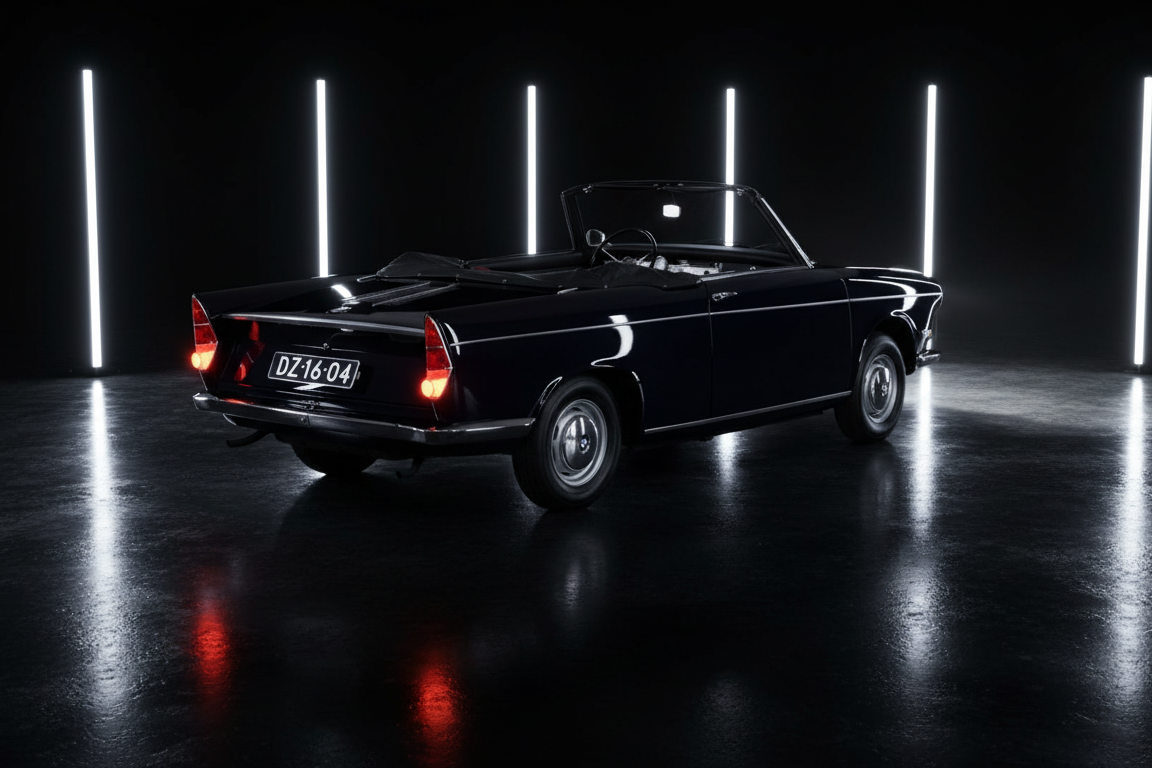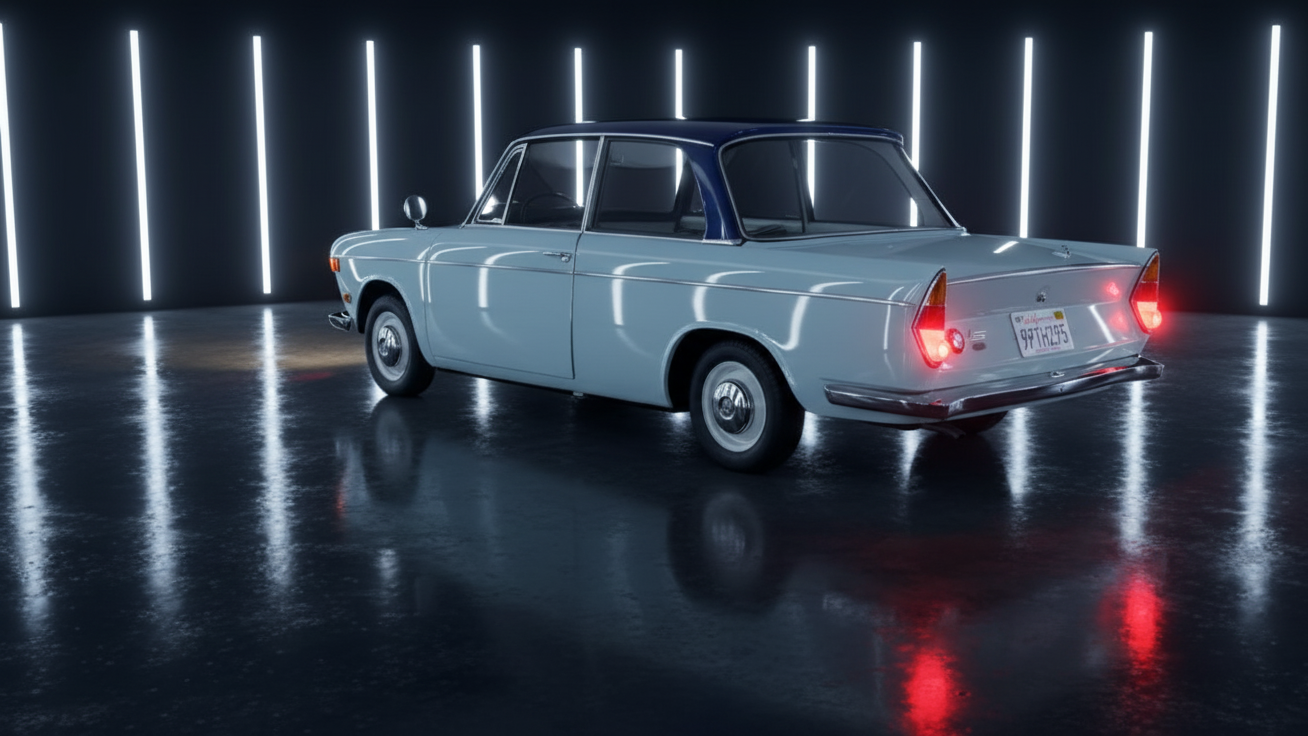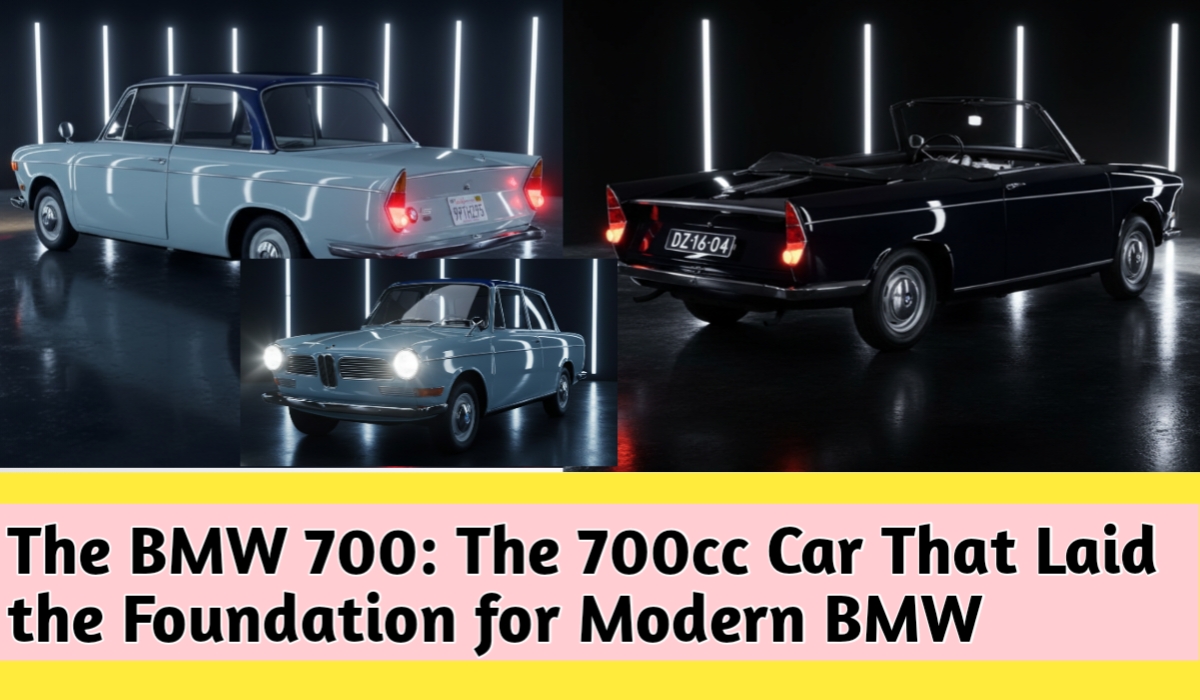The BMW 700: The 700cc Car That Laid the Foundation for Modern BMW
The BMW 700: The ‘Unsung Hero’ of Modern BMW
When we hear the name BMW, the first things that come to mind are their powerful 3-Series, the luxurious 7-Series, or their high-speed cars featuring the famous Twin Kidney Grills. But did you know that there was a time when BMW was on the verge of bankruptcy? The car that rescued the company during that difficult period and paved the way for it to become today’s global luxury brand was the BMW 700.This car looks nothing like any modern BMW. It lacks the brand’s signature kidney grille and boasts no tremendous horsepower. It was a small, rear-engined car with an engine displacement of just 700cc. Produced from 1959 to 1965, the BMW 700 is still considered a very important and crucial chapter in BMW’s history.
Historical Significance of the BMW 700 (History and Importance)

By the late 1950s, BMW was in severe financial distress. They were primarily producing two types of cars:
- Very Large, Luxury Cars: Sales were low, and they were not profitable
- Ultra-Compact Cars: Such as the famous Isetta and the BMW 600, which were affordable but did not generate substantial profit
To save the company from collapsing, BMW adopted a new strategy in the late 1950s. They needed a car that was slightly larger than the Isetta, more traditional, and could serve as an affordable compact sedan for the middle class.
This is where the BMW 700 made its entry.
The car was created by essentially stretching the chassis of the preceding BMW 600. It was intended to be an entry-level family car, much like a Volkswagen Beetle or an early Honda Civic of its era, not a luxury machine.
- Sales Success: BMW managed to sell around 200,000 units of the 700 in the late 50s and early 60s.
- The New Class: The capital and time bought by the success of the 700 allowed BMW to develop its ‘New Class’ cars (like the BMW 1500). These ‘New Class’ models eventually led to the 2002 and later the modern 3-Series, which established BMW as a performance luxury brand.
In short, the BMW 700 saved the company from insolvency, allowed it to survive in the market, and acted as the Launchpad for the modern BMW we know today.
Quirks and Features of the BMW 700 Luxus
Let’s take a look at some of the special and unique aspects (Quirks and Features) of the 1963 BMW 700 Luxus model (Luxus being short for DeLuxe/Deluxe):
Engine and Performance
The BMW 700 was unlike today’s front-engine, rear-wheel-drive cars.
- Rear-Engine Setup: Its engine was mounted in the rear (where the trunk is located in modern cars).
- Engine Type: It featured an Air-Cooled, Flat-Twin (horizontally opposed two-cylinder) engine, somewhat similar to a Porsche Flat-6 or a Subaru Flat-4, but with only two cylinders.
- Power: The engine size was only 697cc (hence the name BMW 700). It produced only around 30 horsepower (hp).
- Weight: The car was extremely light, weighing only about 1,500 pounds (approx. 680 kg).
- 0 to 60 Time: According to original company brochures, the car accelerated from 0 to 60 mph in a mere 32 seconds! This sounds amusing today, but at the time, it was a point of pride.
Design and Exterior Features

The Dawn of the Kidney Grille: It did not have the classic Kidney Grilles. However, the two small, distinct grilles located near the front turn signals are considered the rudimentary beginnings of the modern BMW Kidney Grille design language.
Twin Doors and Tail Fins: It was a Two-Door Sedan—meaning it had a tall roof like a sedan but only two doors for access. The rear featured small Tail Fins, a styling cue inspired by American design trends of the 1950s.
The Fuel Tank: With the engine in the back, the trunk was in the front. However, this front trunk compartment was shared with the fuel tank. This meant that refueling required opening the entire front lid, allowing water to enter if it was raining.
Basic Interior and Unique Controls
This car was the epitome of basic transportation.
- Unlabeled Switches: The dashboard was littered with numerous unlabeled switches and knobs. The driver had to simply memorize which switch controlled the headlights and which operated the wipers.
- Choke and Heater: Next to the parking brake, there were two identical levers—one for the choke (essential for starting the engine) and the other for the heater. Both had to be operated by ‘guesswork’ as they lacked labels.
- Lack of Safety: It was completely devoid of essential safety features like Seat Belts, Headrests, or Airbags.
- Surprising Luxury: Despite its basic nature, the 700 Luxus model included an electronic fuel gauge and a clock alongside the speedometer and odometer—features that were considered “deluxe” at the time.
BMW 700 Variants and Specifications
The BMW 700 was offered with several body styles and engine tunings.
| Specification | BMW 700 (Saloon) | BMW 700 Luxus/LS Luxus |
| Production Years | 1959–1965 | 1962–1965 |
| Body Style | 2-door Saloon, Coupé, Convertible | 2-door Saloon (Long Wheelbase) |
| Engine | 697 cc, Flat-Twin, Air-Cooled | 697 cc, Flat-Twin, Air-Cooled |
| Horsepower (HP) | 30 hp (at 5000 rpm) | Up to 32 hp |
| Top Speed | 120 km/h (75 mph) | Approx. 125 km/h (78 mph) |
| Gearbox | 4-Speed Manual | 4-Speed Manual (Semi-Auto also available) |
| Drivetrain | Rear-Wheel Drive (RR Layout) | Rear-Wheel Drive (RR Layout) |
Mileage (Fuel Economy): As a light car with a small engine, the fuel economy was excellent. Contemporary reports suggest the BMW 700 could achieve figures around 20-25 kmpl (or over 50 miles per gallon) under optimal conditions.
Current Valuation of the BMW 700 (Price and Valuation)
The BMW 700 is now a classic car, so it does not have a fixed ex-showroom or on-road price. Its value depends on its condition, historical provenance, and market demand.
- Historical Price (1962): The price in Germany was around 4,995 DM (approximately $1250 USD at the time).
- Current Classic Price: A well-restored BMW 700 can fetch prices between $20,000 to $40,000 USD (approximately ₹16 Lakh to ₹32 Lakh). Premium and rare models like the 700 RS or Coupé can command even higher prices at auction.
(Note: This price is based on the current classic car auction market and is subject to change.)
Comparison: The BMW 700 vs. 1960s Competitors
The BMW 700 competed against other small, economical cars that provided mobility in post-war Europe
| Model | Origin | Engine | Key Feature |
| BMW 700 | Germany | 697cc Flat-Twin | The car that saved BMW; first model with monocoque structure. |
| Volkswagen Beetle | Germany | 1200cc Flat-Four | Iconic, mass-produced rear-engine car. |
| Fiat 500 (Cinquecento) | Italy | 479cc Two-Cylinder | Ultra-compact city car, even smaller than the 700. |
| Mini Cooper | UK | 848cc Four-Cylinder | Revolutionary front-wheel-drive, space-saving design. |
Like the VW Beetle and Fiat 500, the 700 utilized a rear-engine layout. However, it was viewed as more conventional and comfortable than the preceding BMW 600, making it a popular choice
Pros (Advantages) and Cons (Disadvantages)

| Pros (Advantages) | Cons (Disadvantages) |
| BMW History: The company’s most crucial and historically significant model. | Performance: 0-60 mph in 32 seconds is extremely slow by modern standards. |
| Fuel Economy: Excellent mileage due to the 700cc engine and low weight. | Safety Features: Complete lack of seat belts, headrests, and airbags. |
| Handling: Lightweight and nimble handling thanks to the rear-engine layout. | Unlabeled Controls: Switches for the heater, choke, and lights required memorization. |
| Classic Appeal: Today, it is a rare and highly attractive collector’s item. | Basic Interior: Absence of amenities like a radio, AC, or modern comfort features. |
FAQs (Frequently Asked Questions)
Q1. Did the BMW 700 really save the BMW company from bankruptcy? A: Yes, largely. The massive sales success of the 700, with over 188,000 units sold, provided BMW with the necessary capital and time to develop the profitable ‘New Class’ of cars, which ultimately pulled the company back from the brink of financial collapse.
Q2. What does ‘Luxus’ mean in the BMW 700 Luxus? A: ‘Luxus’ is the German word for ‘Deluxe’ or ‘Luxury’. The 700 Luxus was a slightly upgraded version of the standard 700, featuring more equipment such as a clock, better seats, and chrome trim, although it was nowhere near today’s standard of luxury
Q3. Did the BMW 700 have the BMW Kidney Grille? A: No, the 700 did not feature the classic BMW Twin Kidney Grille. Since it was rear-engined and air-cooled, a radiator grille was not necessary at the front. However, its front-end design had two distinct grille elements that are considered the conceptual precursor to BMW’s ‘Kidney’ identity.
Q4. Where was the BMW 700’s engine located? A: The engine in the BMW 700 was located in the rear (Rear-Mounted), right where the trunk is in many modern cars. It was an air-cooled Flat-Twin engine.
Q5. How long was the BMW 700 in production? A: The BMW 700 was produced from 1959 to 1965, resulting in a production run of about six years and over 188,000 units.
Conclusion (Conclusion) and Buyer’s Suggestion
The BMW 700 is a car that shows any enthusiast where BMW originated. It was not just a compact car; it was the proof of BMW’s survival.Suggestion for Buyers:If you are a classic car collector and wish to own an authentic piece of BMW history, the BMW 700 is an excellent choice. It is fun to drive (in a unique, slow-car-fast kind of way) and tells a phenomenal story.However, keep in mind that this is a 60-year-old car. It is not meant for daily use. Purchasing it means owning a car that lacks seat belts, has no power steering, and features a gearshift pattern based on pure ‘memorization’ and ‘feel’! It is an experience that will help you appreciate the true value of modern BMW’s engineering achievements.

Md Imran Rahimi is the founder and main author of TechScopeHub.in. He is passionate about technology, gadgets, and automobiles, and loves to share simple yet valuable insights with readers. With a focus on honest reviews and clear comparisons, Imran’s goal is to make technology easy and useful for everyone.”

